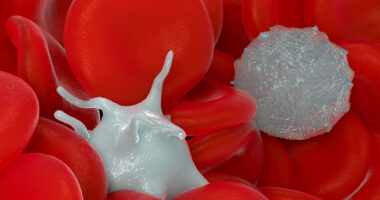Dysregulated Levels of Fat Molecules Found in FA Skin Cells in Study
Results show altered levels of ceramides – fats that help maintain cells

Skin cells of people with Friedreich’s ataxia (FA) show dysregulated levels of fat molecules, including abnormal levels of a class of fats called ceramides that are important for maintaining cellular membranes, a new study shows.
Moreover, the researchers noted that impairments in fat molecules known as lipids “predicted the severity of” FA in patients.
“Together with previous findings on lipids in [FA], our work suggests that lipid accumulation affects all tissues, and could be a secondary toxicity mechanism affecting membrane integrity early on,” the team wrote.
The study, “Skin fibroblast metabolomic profiling reveals that lipid dysfunction predicts the severity of Friedreich’s ataxia,” was published in the Journal of Lipid Research.
A genetic condition, Friedreich’s ataxia is caused by mutations in the gene that provides instructions for making frataxin, a protein that’s important for the function of energy-generating mitochondria. Mitochondria are known as the powerhouses of cells. The lack of frataxin leads to disturbances in the metabolic profiles of cells, which remain incompletely understood.
Studying fat molecules in FA
Now, a team of scientists in the U.S. conducted a series of experiments to examine the overall profiles of lipids in fibroblasts collected from people with FA. Fibroblasts are structural cells that can be easily collected from the skin.
“Ideally, metabolic and lipidomic abnormalities should be studied in the most affected tissues, but frataxin deficiency is present in all tissues to different extents. Since it is difficult to sample human cardiac tissue from living individuals, peripheral tissues, such as fibroblasts, can be used as models to study metabolic profiles of [FA],” the researchers wrote.
“Fibroblasts in [cell] culture have the additional advantage of not being influenced by diet or environment, thus providing a stable system for comparing metabolic flux between patients and controls,” the team added.
The analysis included fibroblasts from nine people with Friedreich’s ataxia, as well as nine individuals without the disorder, who served as controls. In both groups, the mean age was in the mid-20s.
More than 500 different lipid molecules were analyzed. The results showed that fibroblasts from FA patients have a “considerably dysregulated lipid profile,” the team reported. The investigators also noted changes in the levels of several types of lipids, including acylcarnitines and polyunsaturated fatty acids (PUFA).
In particular, several acylcarnitines were found at higher levels in FA fibroblasts. Higher levels of acylcarnitines were associated with longer GAA repeats — a specific set of DNA building blocks that are repeated more than normal in people with FA. Generally, more GAA repeats associate with more severe and rapidly progressing symptoms, as well as a younger age at FA onset.
The findings also indicated altered levels of a class of lipids called ceramides, which play a number of important biological roles including helping to maintain the membranes of cells. The researchers noted that similar findings have been previously reported in the heart cells of people with Friedreich’s ataxia.
“Ceramides are one of the most studied class of bioactive sphingolipids, as they regulate stress resistance, proliferation, differentiation, and maturation of different cells. Local or global dysregulation of ceramide levels can affect the cellular biology at multiple levels, thus contributing to disease,” the researchers wrote.
Statistical analyses revealed a negative correlation between both ceramide and acylcarnitine levels with the amount of frataxin; in other words, individuals with lower frataxin levels tended to have higher ceramide levels.
“Altogether, our work demonstrates that the levels of ceramides and acylcarnitines, directly correlate with disease severity in FRDA [Friedreich’s ataxia], making them possible biomarkers of disease,” the researchers concluded.







